The Best Movies of 2022
With over 60 voters, 120 movies, and nearly two dozen contributors, Hyperreal Film Club has assembled the undeniable master list of the very best that 2022 cinema has to offer. Voters were asked to send in a list of their favorite films up to 10 with their favorite film getting 10 points, their second-favorite getting nine points, and so on. In the interest of full and complete transparency, one film on this list was denied entry into the top 10 by one of our founders on the basis that “it was awful.” That film still has a place in the honorable mention category because even [REDACTED] can’t truly control the will of the people. Also, this list was tabulated before the release of Avatar: The Way of Water, which I’m sure we can all agree would have at least landed in the top three.
Honorable Mention: Fire of Love
What value does a life hold in front of the undeniable scope of the universe? We can't even conceive of the amount of time that's passed since the dinosaurs went extinct. Our brains can't even handle the sheer weight of all that time, of how massive the universe is, of how comparatively small and pointless each human life is. And yet... our existence does matter. To our loved ones, to ourselves, and sometimes, very rarely, to the world.
This is a movie about two scientists lucky enough to have changed the world in a small way and to have widened our understanding of the natural world. It's also a movie about two people uniquely suited to each other's lives who found in each other a natural partner. Or that's how it seems, anyway. All documentaries have a narrative, and here, we're shown a couple whose love for each other mirrors the volcanoes they study. Solitary and mysterious, captured on film, but not truly understood except to themselves. At one point in the film, Miranda July's narration acknowledges that for "Gray Volcanoes," their explosive trigger isn't really understood. The various factors that force those tectonic plates together and creates a bomb of unknown proportion is a mystery to us, and the same could be said of love. We aren't privy to what brought Maurice and Katia together, and we're not even really led to understood the complicated, internal forces that swirled inside their love the way all relationships are complicated and messy and... well, volcanic. All we see is the explosion, the lives they led on camera, the things they left behind. All we're left to do is sift through the ash and try to understand.
-Ziah Grace
Honorable Mention: We’re All Going to the World’s Fair
For all the talk of what it’s like to grow up in a virtual world, to feel the profound isolation, to develop one’s identity and humor on the internet, We’re All Going to The World’s Fair sums it pretty succinctly with protagonist Casey’s series of short YouTube videos, ranging from a walk around a cemetery titled “tour of my high school” to “dumb waterfall” (it’s exactly what it sounds like). Jane Schoenbrun’s coming-of-age tribute to internet culture and early internet alternate reality games is perhaps one of the few movies that captures what being on the internet truly feels like, at least in the early- to mid-2000s. Although World’s Fair is ostensibly set in modern day, Schoenbrun’s depiction of the endless scroll is unmistakably a post-9/11 dive into forum culture and proto-creepypasta with the world-weary perspective of someone much older than Schoenbrun’s teenage protagonist, Casey.
What feels true to the early half of the 2000s more so than the latter is Casey’s guilelessness as she immerses herself in the World’s Fair RPG. The wonder of connecting to people from across the globe in the early 2000s made other equally improbable things—interdimensional travel, in the case of the Ong’s Hat conspiracy theory or summoning demons via image forum—appear almost possible. On the one hand, such reality bending allowed many early internet denizens to imagine new possibilities that could be reasonably enacted in the real world. One can read Casey’s desire to join the World’s Fair game, to be transformed by an internet virus made flesh, to see her experience reflected in the unending series of YouTube videos she watches, as a complexly rendered depiction of gender dysphoria colliding with the internet. In this way, Schoenbrun seems to capture the moment just before the internet calcified into ever more specific algorithms and before it tightened the spiral of micro-identities and micro-communities. Casey isn’t falling down a rabbit hole to more specific advertising classification, or more troubling breaks with reality, but using the digital space to consider what identity, the body, and the self might each mean, however frightening.
-Sarah Schuster
Honorable Mention: Nanny
I was lucky enough to see this with director Nikyatu Jusu in person at this year’s Austin Film Festival, and I was entranced. In her Q&A with festival director Barbara Morgan, Jusu lightly takes to task the line of questioning around this or that genre that Nanny might fit into, eschewing that as a useful framing device for engaging with this movie. It was both somewhat surprising and edifying to hear her push back on a bulletproof #tag in the age of “elevated horror” and the A24-ification of independent-ish movies, and speaks to her razor-sharp artistic and personal vision for what she’s brought to life in her gorgeous and haunting directorial debut. I stg if y’all don’t give her the money to make as many movies as she wants to make…
-David McMichael
Honorable Mention: Three Thousand Years of Longing
With Three Thousand Years of Longing, George Miller, one of cinema’s last great classical mythologists, takes a break in-between Mad Max installments to instead look inward at his own fascination with storytelling. Out of that investigation, he crafts a delicate romance of the mind that is, at once, a fairy tale on its own, and a metafictional examination of why we tell stories, and why sharing our stories with someone else is the most vulnerable, intimate thing we can do. Filled with the sweeping Technicolor bravura of Powell and Pressburger, and the granular focus of Shawn and Gregory, Miller demonstrates his mastery of a deliberately bisected form that’s completely antithetical on the surface to the almost completely visual, nearly-silent Mad Max films—one defined by the tangents and ellipses of conversation, with a focus on the minutiae of expression as the connection between The Djinn, played with enigmatic charm and vulnerability by Idris Elba, and Alithea Binnie, one of the clearest self-inserts by any director I’ve seen in many years, takes mad flight into dizzying realms of the fantastic. Even in a film as seemingly divorced from kineticism as this, Miller’s roving camera, helmed by the legendary John Seale, is almost never at rest—moving through time and space, floating freely through dazzling, giant sets filled with explosions of color, dreamlike relics of bygone eras. It’s a film that feels very much of a piece with the rest of Miller’s non-Mad Max work—a fairy tale, somewhere to the left of the 21st century—and may very well be the central thesis of his entire career: our stories are how we make sense out of the noise of living. And they can save us.
-Jeff Baugh
Honorable Mention: Inu-Oh
Masaaki Yuasa is one of the most distinct and prolific animators working today. In the past five years, he's produced four acclaimed television series—which would keep anyone else plenty busy—and directed four equally lauded feature films. The most surprising part? The last thing you could say about his work is that he's spreading himself too thin.
With his most recent film, Inu-Oh, Yuasa brings his flowing, kinetic animation and frantically paced storytelling to 14th century Japan in the form of a glam-rock opera about two disabled outcasts finding their place in a world of biwa-shredding guitar gods. That might sound like sensory overload. Frankly, at first, it really is. But Yuasa is a natural maximalist who leads with his heart. Inu-Oh opens with a bang and deftly navigates the many loud and few quiet moments, culminating in some truly jaw-dropping songs and dances.
Inu-Oh played festivals in 2021, but by the time it arrived in theaters in 2022, it had become even more timely. Much like another 2022 banger, RRR, Inu-Oh is a tale of friendship that transcends political and social mores. It's also a story about honoring tradition while trying to create a better, more just world. If there's one thing we needed in 2022, it was an understanding of what's at stake when we hide from our collective past and don't see the humanity in others around us. Far from a joyless history lesson, Inu-Oh is a defiant rallying cry fueled by hope, love, and pure freaking rock.
-Craig Zirpolo
Honorable Mention: Barbarian
Honorable mention, my butt. Barbarian was my favorite movie of the year but I am not in charge of this list—just a lowly contributor. This movie is from one of the guys from Whitest Kids U’Know and it’s disgusting, terrifying, thoughtful, and, at times, kind of sweet. Barbarian is largely about a very scary basement in Detroit and a girl (who seemingly only makes wrong decisions) keeps exploring for some reason. I am not going to say anything else because this movie is best enjoyed by knowing as little as possible before viewing. I will say that Justin Long is in it as the worst guy ever and is a great kill to root for. So, this isn’t much of a review as much as it is a plea for you to see my favorite movie so we can talk about how good and gross and touching and wholly shocking it is. If you love to be shaken to your core and also miss your mom then you should see this movie. There is nothing else like it and it will change your brain chemistry. In conclusion, stay out of basements in Detroit and go see Barbarian.
-Hannah Dubbe
Honorable Mention: Moonfall
~ 2022’s best movie to be crossfaded and shouting at in an empty theater to ~
The whole homogenization of spectacle thinkpiece thing has been done to death (see: this writer’s RRR blurb in this very article) so we can leave it alone here. But damn! How refreshing to see an infinite crashing wall of CGI that isn’t tied by lore and money to an extended universe of other identically infinite crashing walls of CGI!
Here at Hyperreal we’re very attached to the mise en scène of the movie-watching experience, so let me just surreptitiously plug a moment to keep an eye out for. Put out your RSS feed for a non-IP spring release, wait about two-thirds of the way through its theatrical run, buy your tickets to go see it at Galaxy, bring your most non-suspiciously-large tote bag filled with [plausible deniability], confirm you’re alone, and enjoy :)
Also, this is an apt moment to remind us all: our culture has betrayed Halle Berry! Shame on every last one of us!
-David McMichael
Honorable Mention: Memoria
In Apichatpong Weerasethakul's published journal (the only way for Americans to own a piece of Memoria) the director explains, on the 13th day of shooting, why he chooses a specific take. Joe says, “I want to use the last one, from the front, where you see their faces. When Hernan is just listening, and she’s sitting behind him, it’s very beautiful: doing nothing.” This quote shows us what Weerasethakul has in mind for much of the filming of Memoria: to find the beauty of the world, whether in the connections between people, the planet, our solar system, and even perhaps in doing nothing.
Memoria is a film about Jessica, a botanist visiting Colombia, who is awoken early in the morning by a sound she describes as “coming from the core of the earth.” It’s a sound designed to emulate a sleeping disorder known as Exploding Head Syndrome. Jessica, played by Tilda Swinton, goes on with her life as this sound is shown to only be heard by her and not well-understood by others. The character is a stand-in for the director who has completed a similar journey trying to understand this mysterious noise that leads him to create films.
I would encourage everyone go see this movie, but that is difficult because it can only be seen during the roadshow-style exhibition in the theater. Like its release strategy, the film is an exercise in restraint and scarcity. I honestly cannot say what you will get out of this film, but if given the attention it deserves, you may find amazing ideas about art, the environment, human nature, and what we should be doing with our brief time on earth. Memoria is something that you do not see everyday. It’s very beautiful even if it’s doing nothing.
-Forest DeLozier
Honorable Mention: Please Baby Please
In 1964, Susan Sontag launched camp into (heterosexual) public awareness with her seminal essay “Notes on Camp.” In her “Notes,” she argues that “Pure camp is always naive”-- intentional camp, deliberate camping, is “always harmful.” In other words, the best camp isn’t trying to be camp.
Well, Sontag may have brought camp out of the early century queer underbelly into the spotlight, but I must say I respectfully disagree. Which brings me to Please Baby Please, Amanda Kramer’s slick, sexy semi-musical take not on camp but on camping, in the very deliberate sense. In the 1950s, when Please Baby Please is set, to be a camp was to be a swish, a fey, in other words, what we might today take to be a somewhat stereotypical homosexual in manner (guilty as charged!). But funnily, it’s not Arthur (Harry Melling), our maybe-gay maybe-bi maybe-something-else-trapped-by-the-prison-of-masculinity hero, but his wife, Suze (Andrea Riseborough), who rises to the occasion. Riseborough steals the show with her stylish theatrics, the perfect over-the-top complement to Melling’s more constrained performance.
Please Baby Please might be off putting to some in its almost lascivious dissection of gender and sexuality. It’s all a bit Gender Studies 101, and the film stumbles in its handling (or lack thereof) of race, given the time it takes place—all Kenneth Anger and John Waters, no Isaac Julien. But for me, nothing beats the sheer glee of a camp movie that knows it’s a camp movie and turns the dial up to 11 accordingly. There’s so much I could say about this film’s over-the-top, and yes, pretentious dissection of sexuality and gender, but I only have a few short words left, so I’ll leave you with this: Great camp is also always a little pretentious. For God’s sake, we’re quoting Sontag!
-Remus Jackson
Honorable Mention: Orphan: First Kill
Typically, a prequel provides crucial information that provokes the mind and creates context. Orphan: First Kill is not bothered with any of that. The film raised more questions than before, and not just because I haven’t actually seen Orphan (though I have inexplicably read the Wikipedia entry many times). I selected this from the in-flight entertainment catalog on an 8:00 AM flight back from Chicago, and my exhausted brain delighted in these mysteries:
Why is this movie named First Kill when Esther has actually killed many people well before the story begins?
How many migraines did the VFX team suffer while trying to make a grown woman look like a child who is, in fact, a grown woman?
How has nobody decked that shithead brother before?
Why is Esther dressed as if she’s Annabelle, rather than in some sensible jeans and sweaters made within the last half-century?
Is the very hot dad’s art… good?
Honestly, who needs information when this movie delivers so much more? We have a psychopath girlboss who, objectively, is not even the worst person in this movie. We have a plot twist that’s absolutely bonkers, whether or not you saw it coming (I didn’t and choked on my complimentary Biscoff cookies). We have Julia Stiles doing campy violence. Don’t get me wrong: I love intellectual cinema that inspires, provokes, and reflects the complexity of the human condition. But even the most sophisticated palette can’t deny the appeal of pure sugar, and this is 99 minutes of brain candy. To my distress, the plane landed with just five minutes left. Like the sugar addict I am, I raced home in my post-flight daze, sweating in my Chicago-appropriate chunky knits, eager to see the ending. Appetite sated, brain freshly smoothed, I nodded in satisfaction and lay down for a nap, like a child who just polished off a bag of sour gummy worms.
-Kathryn Bailey
Honorable Mention: Aftersun
Was my father a bad person? Am I inherently bad if my father was? Can I be good because I acknowledge that? These thoughts arose as I watched Aftersun–a film that pushes a viewer toward psychoanalytical introspection through a lingering absence of details. Standing in the theater lobby, everyone I saw this with was at first speechless but then had to blurt out their own familial take.
Sure, this movie can literally be explained as a non-linear narrative about a father-daughter relationship centered around a past vacation to a dingy resort on the Turkish coast. But, in Charlotte Wells's stunning debut, she activates an emotional subconscious through film, by providing enough vacancy for viewers to connect in their own way. In its quietest moments, such as when immersed by water or staring at kites in the sky, Wells slowly but surely charges a liminal devastation that twists a bittersweet, subtle knife by the final scenes. Watch out, Joanna Hogg ; )
Throughout the film, eleven-year-old Sophie takes out her MiniDV-camcorder and interviews her 31-year-old father, Calum. It is implied that Calum is depressed; perhaps he had issues in his past and feels like he had a child too young. These indirect observations reflect how children get to know their parents: highly intuitively but never completely. The analog recording isn't gimmicky nostalgia—it speaks to the imperfection of recreating memory even when we've captured every pixel.
While watching this film, I was waiting for something bad to happen, some climax to make it make sense. But, rather, what makes this film effective is how it reveals that the banal glimpses of each other echo within our psyche forever, indeed rising to the surface in unexpected limerence, both beautiful and painful. We are alone, yet keep everyone we have ever met. I yearn to understand my past, even if it wrecks me.
-Anthony Tran
Honorable Mention: Erica’s First Holy Shit
For anyone who has ever tried, you know it is fucking hard to make things! Especially big things, especially things that cost money and involve a whole rogue’s gallery of people! Especially things that don’t have a pre-destined (*hurk*) market niche! (Yes I’m thinking specifically of you Sock Club)
And so and so… Erica, Jessica, Jeremy, Sawyer, and the whole squadron have made something truly special, iconic, and I’m so sorry but IMPORTANT. It’s equally a documenting of a moment in time and a timeless testament to doing the goddamn thing. It’s impossibly fun and impossibly inventive. If you aren’t embedded directly or tangentially in the queer and weirdo arts scene in Austin, this will make you wish you always had been.
Hello editor, can I break whichever wall it is and tell our dear reader to come watch this movie with us at Hotel Vegas on January 9? I hope so, because it might just change their life.
Ed note: Yep. Interested readers can grab tickets here.
-David McMichael
#10: Pearl
In Pearl, Ti West’s immediately made and incredible prequel to X, a star is born. Mia Goth has proven herself as a formidable actor in previous roles (X included), but here, she truly shines by giving a ruthless farm girl a wounded, yearning soul. In an unforgettable monologue near the end of the film, Goth imbues Pearl with real humanity, and you can’t help but empathize—even if she’s already built up a sizable body count. As she recounts the disappointments and sorrows of her life and circumstances, you simply can’t look away.
It’s hard to believe that a soul-bearing, movie-stopping monologue is happening in a movie otherwise filled with bloody kills, a hungry crocodile, and silent-era porno reels, but it is. More unbelievably, it works! “I want what they have so badly,” she explains to Mitzy, her clueless sister-in-law, “to be perfect, to be loved by as many people to make up for all my time spent suffering.” Not everyone has killed their loved ones in the name of chasing fame and fortune, but everyone knows what it feels like to want love, to be accepted, to be understood despite our insecurities and flaws. She’s acting out because she has no other outlet for her loneliness, isolation, and heartache. Who couldn’t relate after the last two years of true, lonely suffering in our world? The monologue pauses the movie and forces us to empathize with Pearl, and see a bit of ourselves in her—maybe the most effective and chilling element in the movie.
Add in West’s attention to detail, the trappings of technicolor spectaculars (The Wizard of Oz, especially), and what you get is a unique, welcome addition to a rich year in horror, and the birth of a new slasher icon.
-Alejandra Martinez
#9: Triangle of Sadness
“A Russian capitalist and an American communist on a $250 million luxury yacht.” What could go wrong? Simultaneously everything and nothing, if you ask many who saw Ruben Östlund's Triangle of Sadness. It's a portrait of capitalism reaching its gluttonous end, and the film’s chaotic nature is exactly what makes it perfectly potent.
You may have noticed some political buzzwords in the last paragraph. While intentional, these topics are unavoidable when discussing a film that screams, “All art is political!” This will no doubt deter some viewers, a shame since watching the super-rich drown in their own opulence (sans vomit and shit) was once universal entertainment. But the movie knows its audience; younger people who are angrily peeling back the layers of their capitalist governments to find their own sinking ship. And as a member of said crowd, I can’t tell you how satisfying it was to watch.
Östlund makes many interesting choices not only as director of the movie, but also as its writer. From choosing western capitalism as the subject of his first English-language feature, to having anarchist Woody Harrelson portray the ship’s captain as a self-described “shit socialist” who blissfully watches the chaos ensue, and ending the film with a literal coconut island analogy that even questions the ethics of what lies beyond the status quo. The film is painfully self-aware of where we are as a society, but also does not balk at addressing the unknown reality of a truly Marxist world.
I’ve seen critics deride this movie for many reasons; overlong runtime, stagnant pacing, underwhelming last act, disgusting portrayals, overbearing themes, etc. While I disagree with these, I do think some could very well be intentional. If we all thought of capitalism with similar criticisms and disdain, would we finally give it up?
-Andrew Cheatham
#8: Jackass Forever
Have you ever thought about what the early humans from The Stone Age laughed about? Undeniably, there had to have been lots of dicks in a vulnerable state. Thus suggesting a caveman Steve-O with 40 bees on his cock and balls. I bet that was pretty funny to his cavemen friends who stood and watched.
It hasn't been millions of years since the last Jackass movie, but ten years is still a long time to wait for Johnny Knoxville and his crew to put themselves through insanely, ineffable dares for the sake of comedy. We watch them as they hang out with old friends and bright eyed new faces, creating something so special on screen you don’t even care that the camera is looking right inside someone’s asshole. Each dare and or prank seems to push the limitation of their buddy’s psychological state and physical well being, yet they seem to hug one another a little tighter after each time. These men break down what it means to love and trust another man so much they completely give themselves to each other. If you can stomach it, Jackass Forever is a beautiful and rich occurrence you rarely see in film.
Some people wonder why this group never learns from the near-death experiences they have collected through the years. They never will because the Jackass crew lives for the moment. It's the moment right after the incident when the laughing stops, and time seems to as well. You're just as concerned as they are for their friend, but then they slowly get up and the rest of the crew bursts into applause and camaraderie. Many will watch, but only a few will truly see the beauty of this artform. If you are one of the lucky few, you know that some friends come and go, but Jackass is forever.
-Kelsey Kilgore
#7: Top Gun: Maverick
Thirty-six years after the first film, Tom Cruise returns to the hallways of Top Gun for one last takeoff (for now at least). But instead of a need for speed, Cruise has got a need for introspection. What could have been an easy cash grab with some middling CGI dogfights ends up being a reflection of the Hollywood superstar’s career and the uncertainty of the next generation of filmmaking. Mirroring Cruise’s real life, people scoff at Cpt. Pete “Maverick” Mitchell, constantly reminding him of his flaws and a past that he can’t seem to escape. After repeatedly proving himself, he’s asked to go back and do it again, but this time as the teacher. He walks in with a cocky smirk on his face, solution in hand without realizing the threat looming ahead is bigger than anything he’s dealt with before.
With a newfound sense of responsibility, Maverick is ultimately forced to rectify his mistakes and confront his future. All of these moments are bookended by a breathtaking 30-minute sequence of aerial stunts, blurring the line between practical and CG, that leave you wondering just how they convinced a studio to let them pull this off. The supporting cast, lead by Miles Teller and Glen Powell, is nothing to scoff at either. Each character is given enough background to feel as if these are real people and not just filler in between Tom Cruise’s escapades. The airway to Top Gun: Maverick was turbulent, but when the runway finally approached, Joseph Kosinski landed this F-14 with a finesse that would make Tony Scott proud. The film sees Tom Cruise finally assuming his role as an elder statesman, and with that comes the understanding of two things: the world will anyways be a danger zone, and if you’re prepared for that, he’ll be your wingman anytime.
-Blake Williams
#6: Crimes of the Future
Davey Cronenberg comes squelching back with his first dip into the body fantastic since 1999’s eXistenZ, blessing 2022 with an exciting novel organ grown from familiar fields of flesh. Cronenberg’s sardonic humor, his eye for the grotesque, the tenderness beneath the skin - all present in Crimes of the Future, but assembled and reconstructed to form a new system; a multifaceted body of meaning both reflecting and lampooning a life spent creating art, cultivated by a master hand returning to the start of his path. It's a visceral jolt for longtime fans, a sampling platter for fresh eyes, very funny as a comedy, and deeply resonant in a time when conflict between those who would embrace the complexities of their bodies and those who would police them has become more and more dire. I'm not saying this is a movie about Viggo Mortensen taking estrogen, but……
-Morgan Hyde
#5: Decision to Leave
I fully credit Park Chan-wook for my love of movies. I watched Oldboy probably too early in life and have been a superfan ever since, endlessly entranced by his unique ability to weave tender, poignant stories punctuated with such visceral, bloody intensity. So you can imagine how distressing it was for me to read that he intended to tone down the ‘sex and violence’ in his newest film in order to make it more accessible to wider audiences. Decision to Leave is just that: toned down. In lieu of blood-soaked plot twists and melodramatic climaxes (narrative and otherwise), we get covert rendezvous and subdued inner turmoil. Amid standout performances and breathtaking cinematography, Park takes his viewers on a journey that is as reverent as it is restrained, immersing the audience in his protagonists’ forbidden connection.
To that end, this movie does not hold much of what we typically see and love from Park Chan-wook. Yet somehow, it is still unmistakably his—like all his other films, it is sweeping and romantic and so, so funny. I was blown away by how familiar and characteristic it felt, even with his dramatic new approach. Now for my spicy take: if you haven’t ever seen a Park Chan-wook movie, I don’t think this one should be your first. Part of what made Decision to Leave so special was watching it in the context of his other works. Knowing his oeuvre made the hushed exchanges that much softer, the longing glances that much more wistful, the final moments that much more tragic. This movie takes everything you know about Park as a filmmaker and flips it on its head; I think it solidifies him as one of the greatest working directors today. It left me shattered, and I cannot recommend it enough.
-Alyson Riley
#4: RRR
My heart has never soared as high and fast as it did when that truck careened around, slow-mo launching Bheem and a whole revolutionary zoo’s worth of megafauna into a prancing crowd of smug imperialists. Maybe that says something about the way I spend my days, but luckily that’s beyond the purview of this blurb!
Like that old quandary about whether a one-pound box of feathers or stones will tip the scale more, it is nearly inconceivable that RRR occupies the same 182 minutes of earthly time as does Avengers: Endgame. The sincerity, invention, joy, choreography, SFX, action, story, and heart on display in this Telugu epic should be a clarion call to Hollywood, shaming the repetition, shaming the cynicism, shaming the utter dullness of it all. We can be entertained! We can have nice things!
Ultimately, of course, the bloat is here to stay for the foreseeable future, an Ever Given lodged firmly and irrevocably in the greenlight canal. If that means we have to look beyond the (tbh violent and arbitrary) borders of this fading empire for inspiring spectacles, sign me up and sew new pages into my cinematic passport baybeee!
-David McMichael
#3:Tár
While social media is pivotal to the character’s downfall, real-life Film Twitter has embraced Lydia Tár, the ruthless, impeccably-dressed maestro for which Tár is named. Her prominence as internet antiheroine du jour speaks to the clarity with which Cate Blanchett and writer/director Todd Fields have defined her character. Even if you’ve never encountered someone with a similar lifestyle or career—and most of us haven’t—you leave the theater with a complete understanding of Lydia Tár, her flaws, and her worldview.
The rest of the story is trickier to pin down, and the film is better for it. Tár changes shape based on the assumptions the viewer brings to each on-screen interaction. The movie’s refreshing ambivalence towards its themes of sex, gender, and power will assure the movie’s relevance long after the Lydia Tár memes lose their social currency.
Other standout elements of Tár include the hair-raising sound design, the performances of Nina Hoss and newcomer Sophie Kauer, and Lydia Tár’s outfits—seriously, they’re that good. Along with her palatial Berlin home, Tár’s luxe, menswear-inspired wardrobe contributes to the intoxicating power fantasy that falls apart in fits and starts during Tár’s 158-minute runtime. The movie’s tragicomic ending, teased in the opening credits for eagle-eyed viewers, is as memorable as Lydia Tár herself.
-Lauren Schnieder
#2: Everything Everywhere All at Once
We come to Daniels for magic.
We come to laugh, to cry, to care. Because we need that. All of us.
That indescribable feeling we get when two rocks talk to each other in the vast nothingness. And we go somewhere we've never been before.
Not just entertained but somehow reborn together. Two women with hot dog fingers on a huge silver screen. Sound design that I can feel.
Somehow heartbreak feels good in a multiverse like this.
Ke Huy Kwan, Jamie Lee Curtis, Michelle Yeoh, and Stephanie Hsu feel like the best part of us. And stories feel perfect and powerful because here
they are EVERYTHING EVERYWHERE ALL AT ONCE.
-Jenni Kaye
#1: Nope
If I told you that one 2022 film would sneak onto a ballot for Sight & Sound’s latest Best of All Time poll, what would your guess be? If I told you that movie was likely going to be shut out of the major categories at the Oscars, does that clarify things?
Jordan Peele’s third feature divided film critics, but overwhelmingly united Hyperreal folks. Exponentially more enigmatic than his first two features, we were drawn to Nope as a hypnotic artist’s statement - one that conjured the magic, mystery, and misery of contemporary American culture.
Both a true western and sci-fi flick, Nope somehow also managed to be the strangest and most stylish blockbuster in ages. Like Godard by way of A24, it was the M.V.P. of our best movie year since 2019. Where will you take us next, Jordan Peele? May you be the first director to live until infinity <3
-Tanner Hadfield






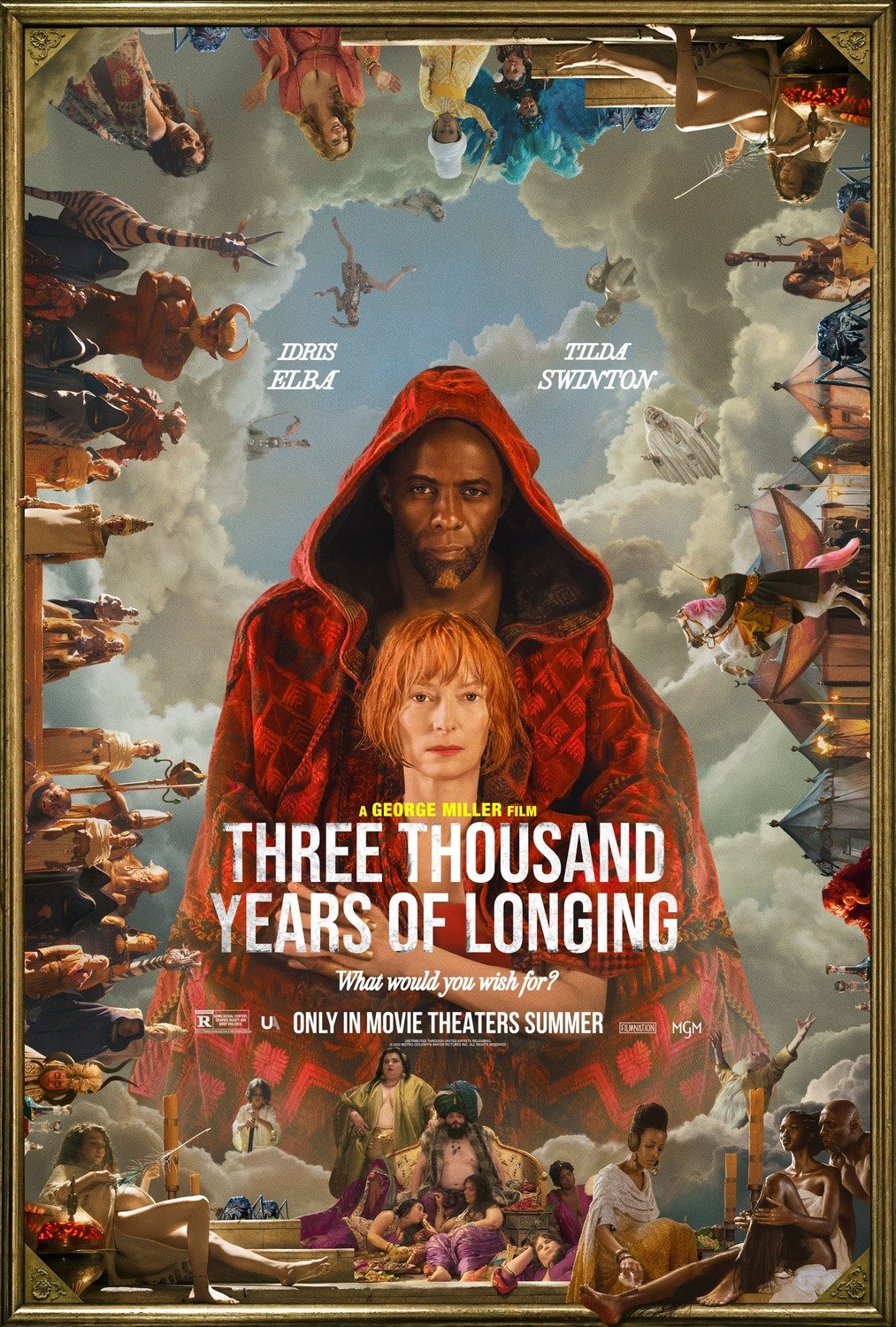





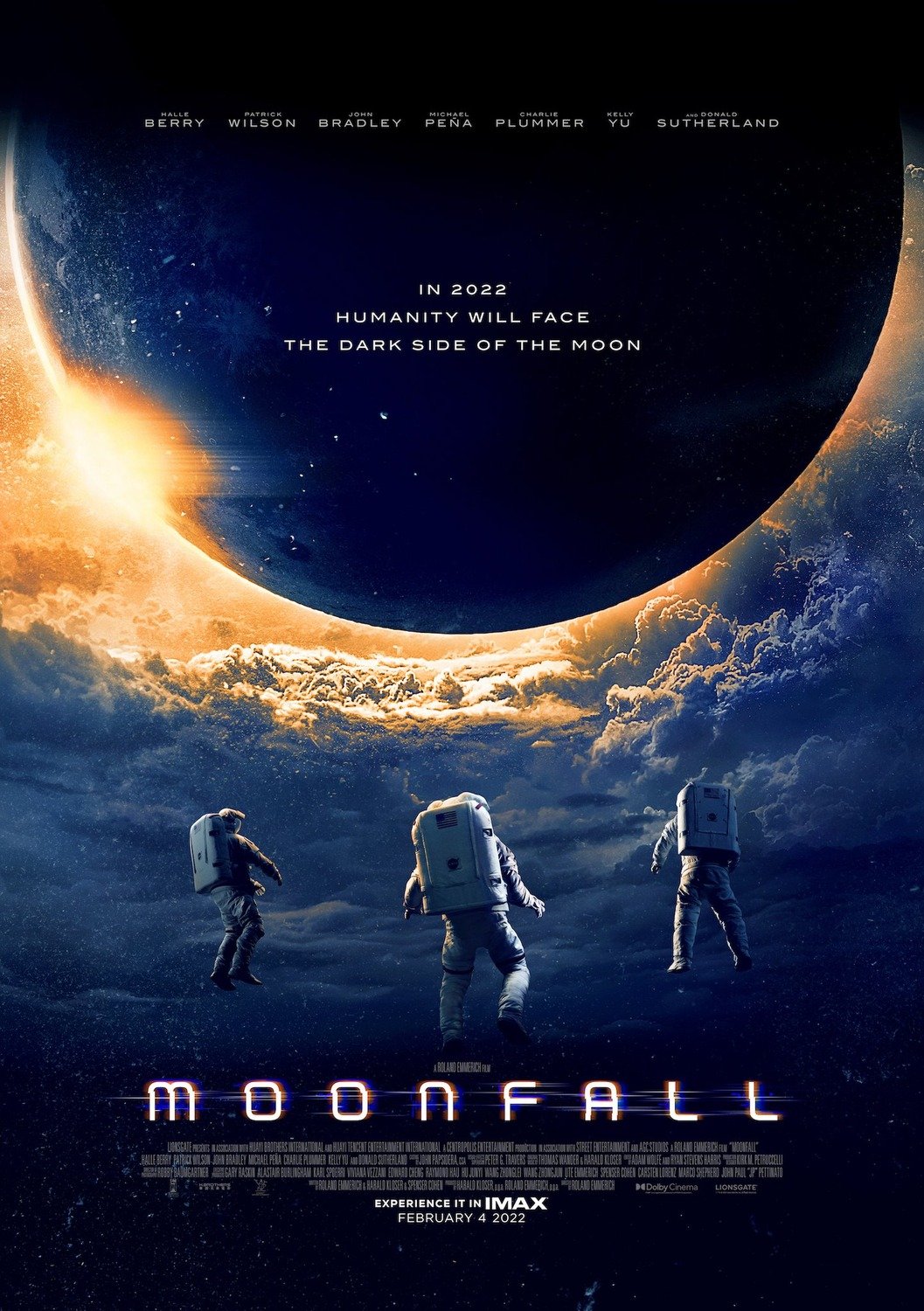




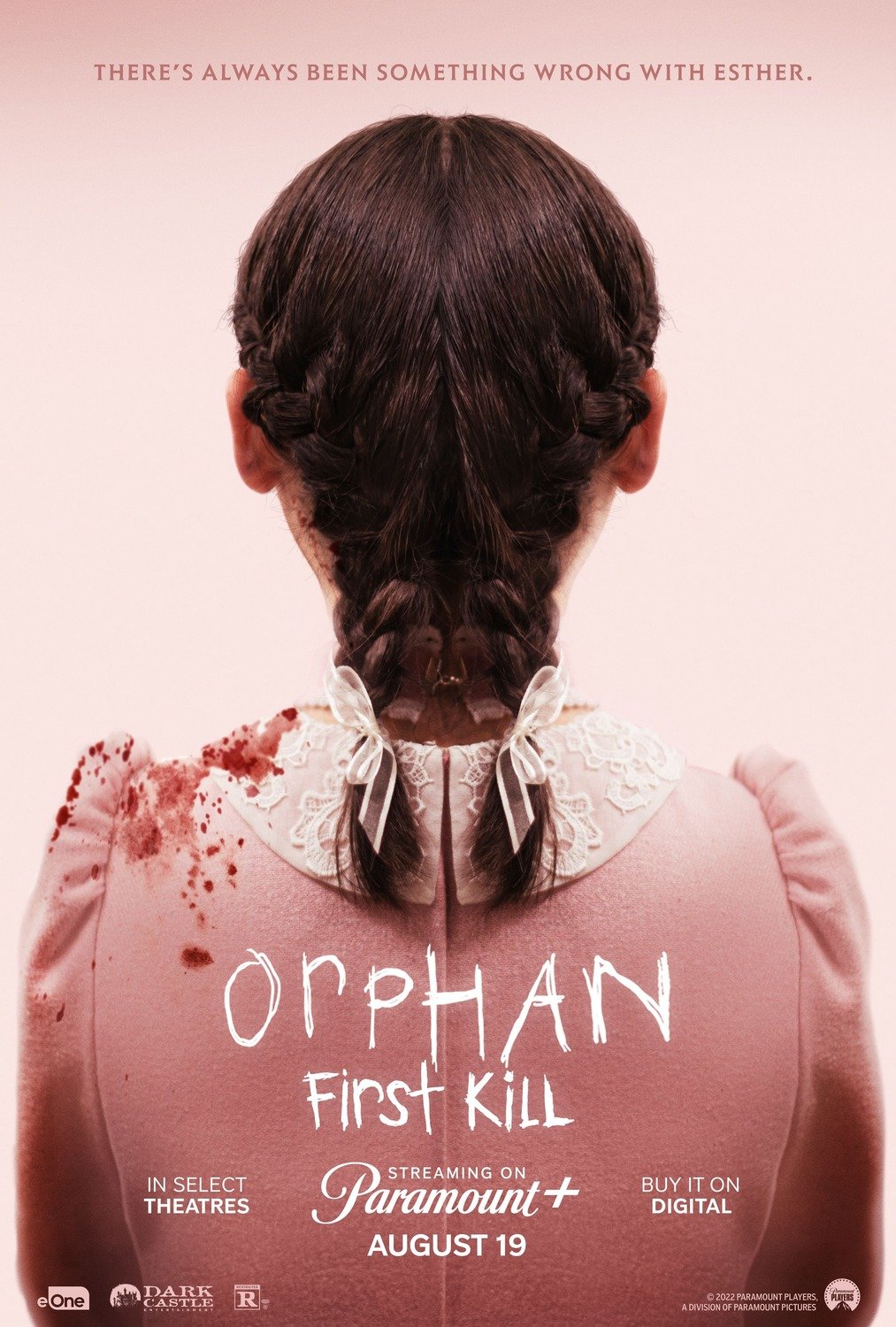








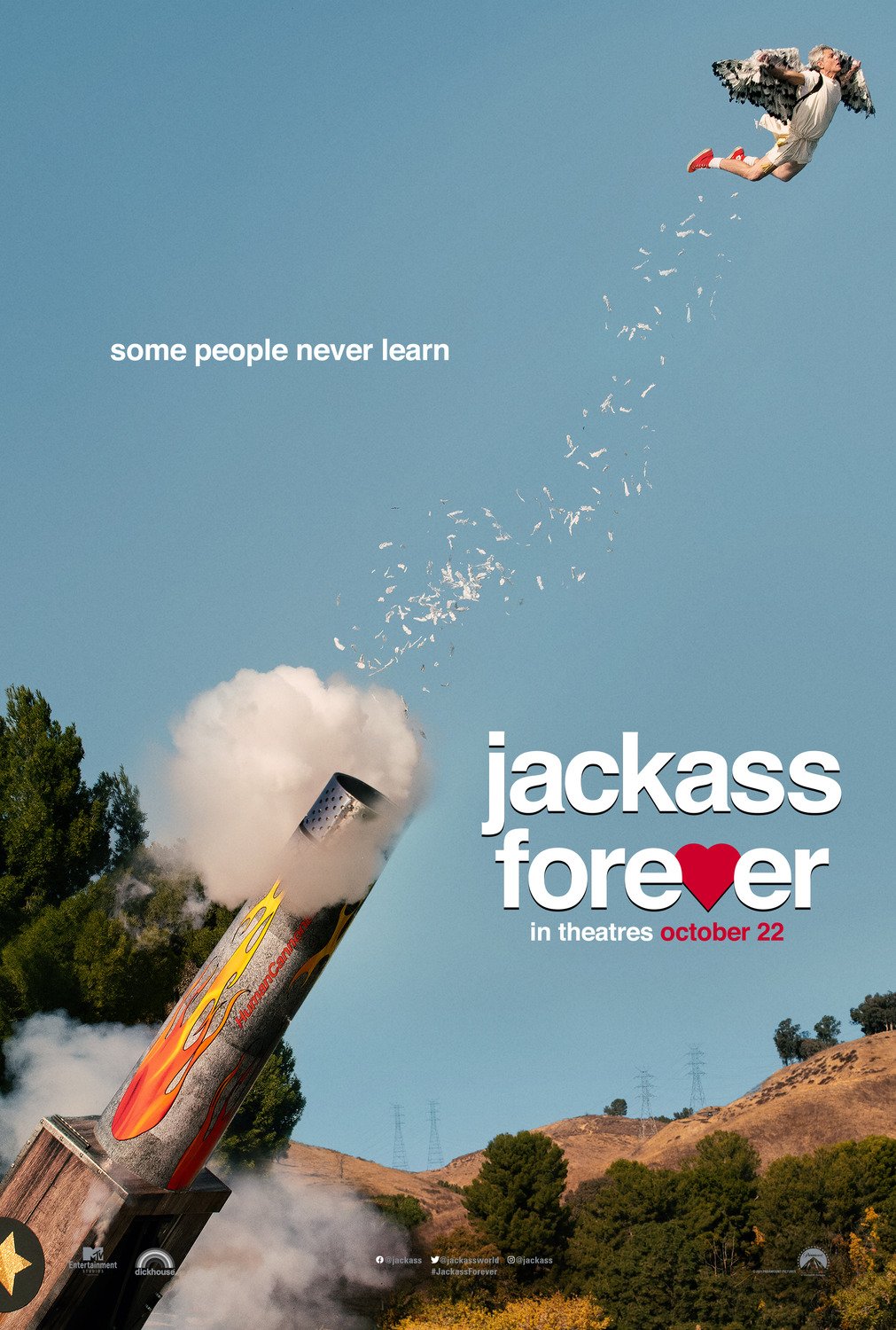





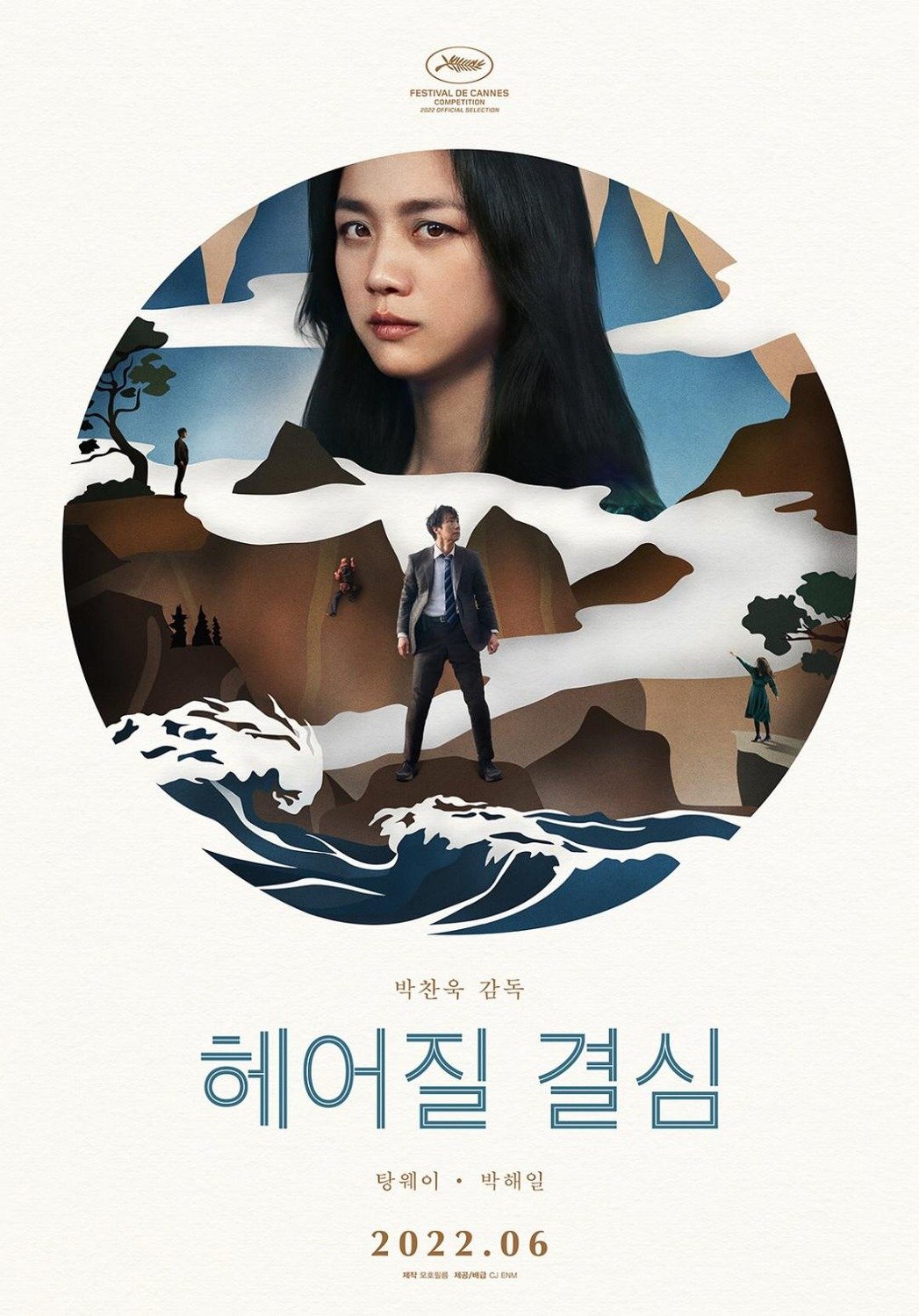


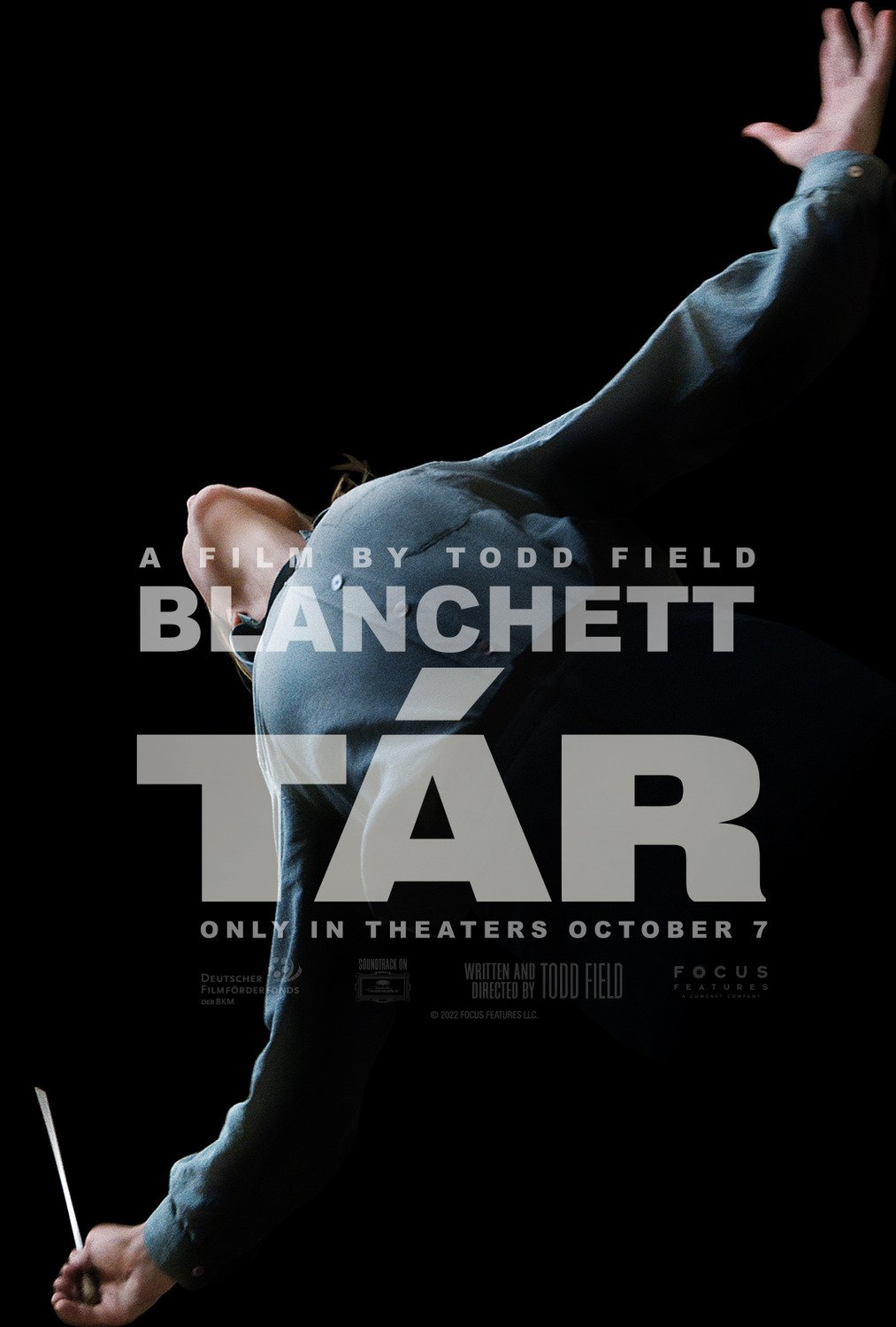

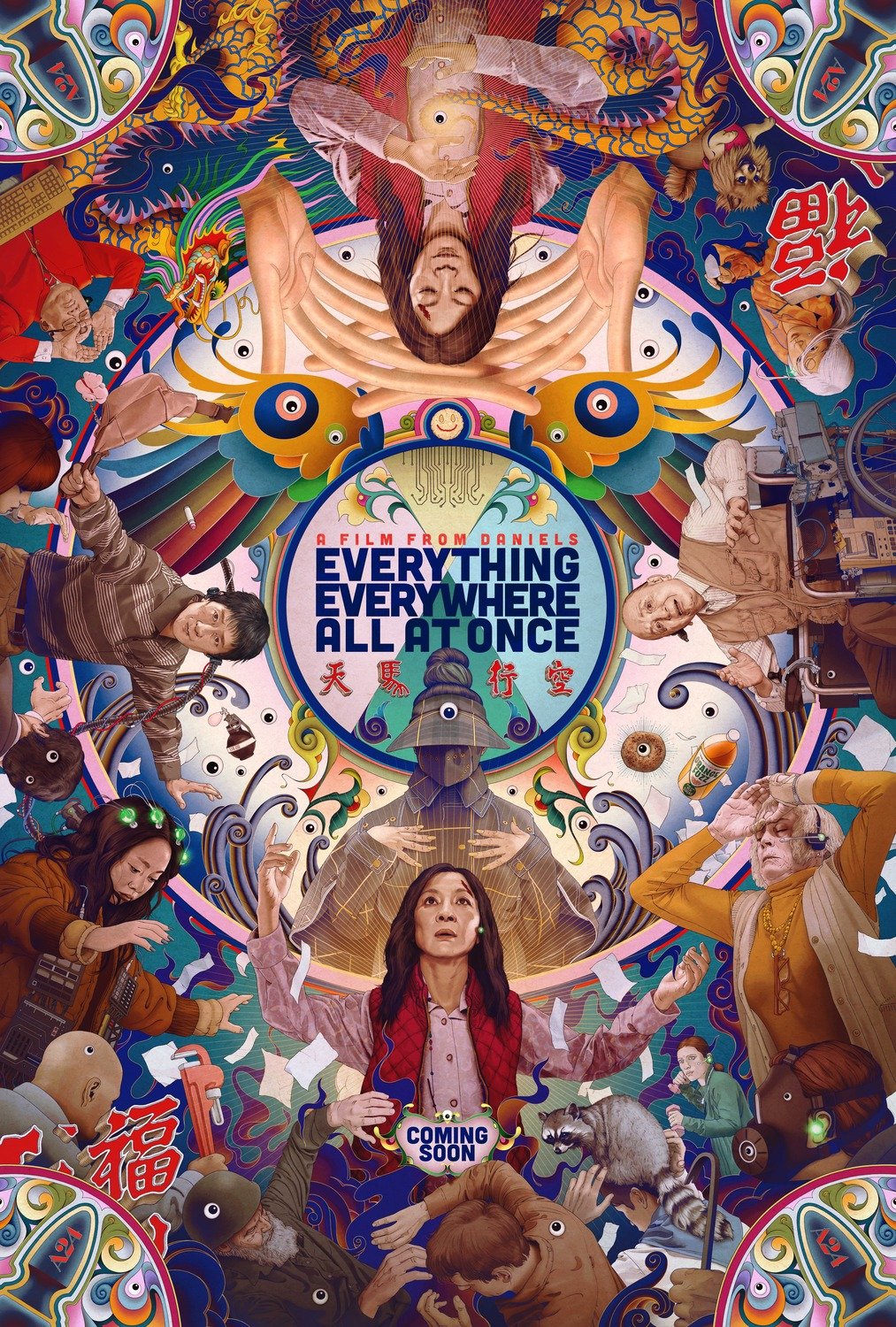




Ziah is the founder and former editor-in-chief of the Hyperreal Film Journal. He can usually be found at Austin Film Society or biking around town.